
Catch up on the top radiology content of the past week.


Catch up on the top radiology content of the past week.
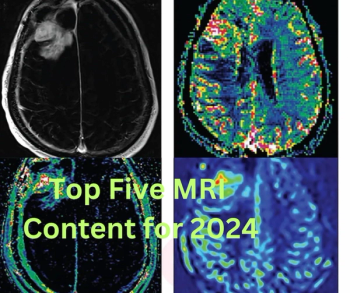
Catch up on the most well-viewed magnetic resonance imaging (MRI) content from 2024.

In a new study involving nearly 600 biopsy-naïve men, researchers found that only 4 percent of those with negative prostate MRI had clinically significant prostate cancer after three years of active monitoring.
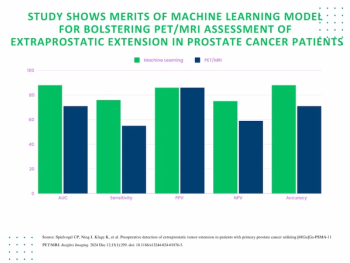
The use of an adjunctive machine learning model led to 17 and 21 percent improvements in the AUC and sensitivity rate, respectively, for PET/MRI in diagnosing extraprostatic tumor extension in patients with primary prostate cancer.
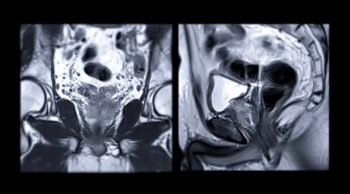
In a new point-counterpoint discussion published in the American Journal of Roentgenology, researchers debate the merits and limitations of the Prostate Imaging Reporting and Data System (PI-RADS) version 2.1.
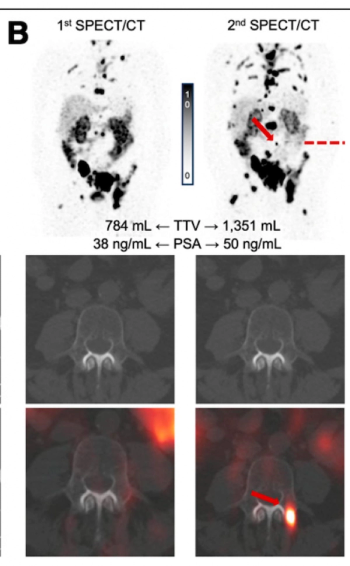
Researchers found that new prostate lesion detection on SPECT/CT at the beginning of a second cycle of 177 Lu-PSMA-617 for mCRPC was associated with an over sevenfold higher mortality risk.
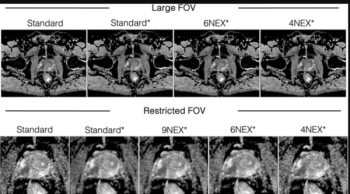
Employing deep learning reconstruction at four excitations for DWI MRI may lead to an average five-minute reduction in exam time for prostate mpMRI, according to a new study.
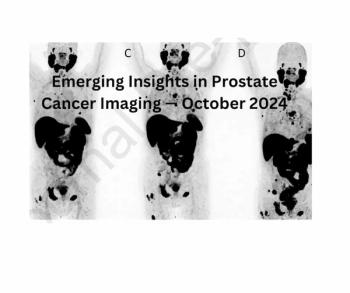
Catch up on the most-well viewed prostate imaging content in October 2024.
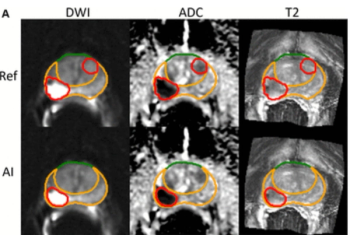
For patients who received radiotherapy for localized prostate cancer, total intraprostatic tumor volume derived from AI segmentation had a 10 percent higher AUC for predicting seven-year metastases in comparison to a risk model from the National Comprehensive Cancer Network (NCCN).
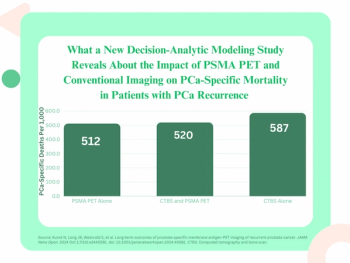
For patients with biochemical recurrence of prostate cancer, PSMA PET imaging may facilitate a 12.8 percent lower incidence of prostate cancer mortality in contrast to the combination of CT and bone scan, according to long-term outcome estimates from a new decision-analytic modeling study.
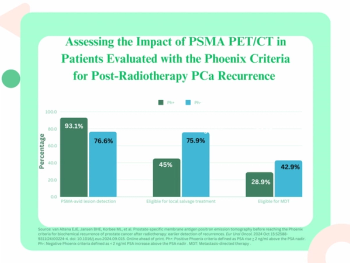
Earlier detection of PSMA-avid lesions in post-radiotherapy patients with increases in PSA levels < 2 ng/ml above nadir were reportedly associated with a significantly lower incidence of distant metastases and lower overall mortality rates.
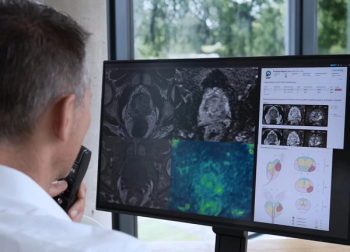
When employing a PI-RADS > 4 cutoff, researchers found that the mdprostate software provided an 85.5 percent sensitivity rate for diagnosing clinically significant prostate cancer on mpMRI.

In a recent interview, Lisa F. Newcomb, Ph.D., discussed the merits of active surveillance for low-risk prostate cancer (PCa) and key findings from multicenter research involving over 2,100 men with localized PCa.
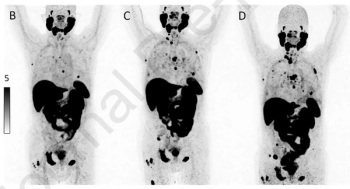
PSMA PET/CT revealed progressive PCa in 31 percent of patients who demonstrated greater than a 50 percent decline in PSA level after treatment with either an androgen receptor-targeted agent or chemotherapy.

In a recent interview, Bridget Koontz, M.D., discussed the capability of the PET imaging agent 18F-flotufolastat for diagnosing post-prostatectomy recurrence of prostate cancer in patients with PSA values less than 1 ng/mL, based on research presented at the American Society for Radiation Oncology (ASTRO) conference.

Omitting biopsy procedures in men with PSA levels > 3 ng/ml and negative MRI findings for prostate cancer (PCa) was associated with significantly lower risks of diagnosing clinically insignificant PCa in comparison to the use of systematic biopsy, according to an approximately four-year study of over 13,000 men who had prostate cancer screening.
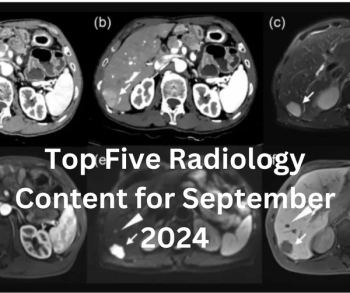
Catch up on the most-well viewed radiology content in September 2024.
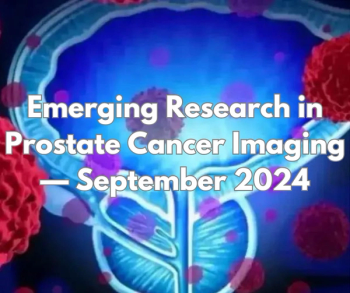
Catch up on the most-well viewed prostate imaging content in September 2024.
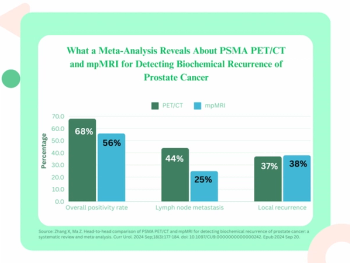
A new meta-analysis found that PSMA PET/CT offers a 12 percent higher positivity rate for detecting biochemical recurrence of PCa and a 19 percent higher positivity rate for identifying lymph node metastasis in comparison to mpMRI.

Catch up on the top radiology content of the past week.
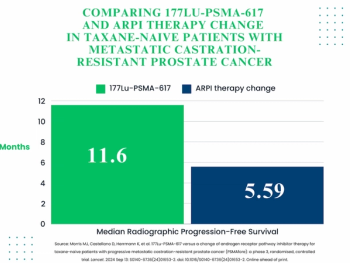
The use of 177Lu-PSMA-617 was associated with a significantly longer radiographic progression-free survival and a 12 percent lower rate of grade 3 or higher adverse events in comparison to a change of ARPI therapy in patients with metastatic castration-resistant prostate cancer (mCRPC).

For patients with metastatic castration-resistant prostate cancer (mCRPC) and bone metastasis, the combination of enzalutamide and Ra223 led to a median overall survival rate of 42.3 months in contrast to 35 months for enzalutamide alone, according to research presented at the 2024 European Society for Medical Oncology Congress (ESMO) in Spain.
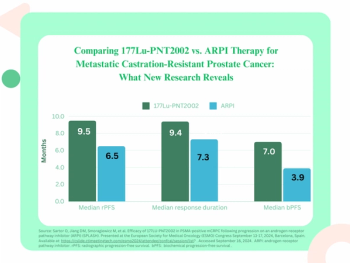
The PSMA-targeted modality 177Lu-PNT2002 improved radiographic progression-free survival by 29 percent in patients with mCRPC in comparison to ARPI therapy, according to new phase 3 trial data presented at the ESMO Congress in Spain.
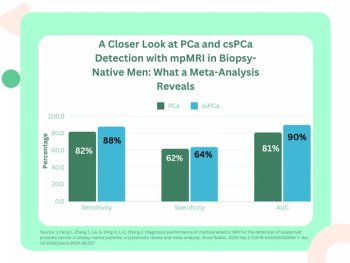
For clinically significant prostate cancer, multiparametric MRI (mpMRI) has a pooled sensitivity rate of 88 percent in biopsy-naïve men, according to a new 16-study meta-analysis.
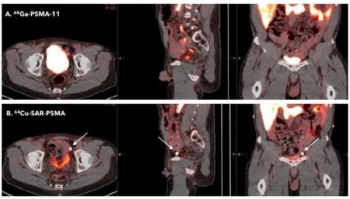
Currently in phase III trials, the 64Cu-SAR-bisPSMA PET agent reportedly offers a longer half-life and higher tumor uptake than other radiopharmaceuticals for prostate cancer imaging.